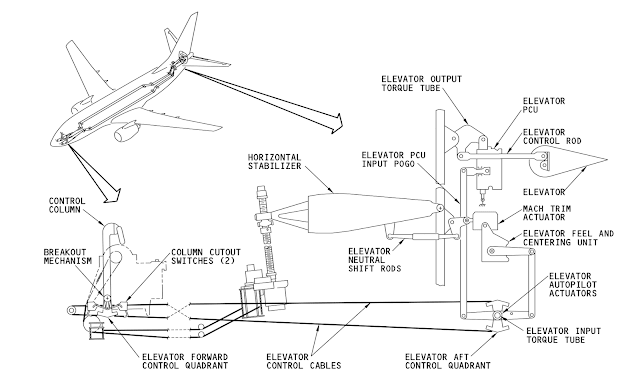Alistair_Heaton is on target, from my perspective. On the ground with the pilot reading a manual or using CBT for familiarization, it is easy to understand, "If the trim appears to be arguing with the intent of the pilot, use the STAB TRIM CUTOUT switches." But takeoff is already well known among pilots as a high workload phase of flight with plenty of factors capable of killing you. As such, taking the wrong action during takeoff can be as bad or worse than doing nothing. So as Alistair indicated, recognition is vital, and recognition during a very busy flight phase is difficult. Also as Alistair noted, the trim wheel and indicators are well down out of the line of sight unless the pilot takes their eyes off of the outside horizon or the control instruments, whichever is being used to establish their situational awareness.
Using the Lion Air preliminary report from the authorities, the Lion Air accident aircraft had the same activation of the MCAS during the flight just the day before. While maintenance cleared the issue by following the manual, apparently the true fault was not corrected. The accident flight crew would have had the aircraft log available for review, but there is no way to tell if the wording of the log communicated to the accident crew the true circumstances, and most importantly, the actions taken by the previous crew which resolved the trim runaway and allowed for continued safe flight. It is unlikely that the two flight crews had the opportunity to speak directly to each other.
So for a recap (admittedly abridged) and an application to the Ethiopian accident:
1. STAB TRIM CUTOUT switches to stop any type of runaway trim have been available on the flight deck of commercial aircraft for decades. Trim runaway would be defined approximately as, "The trim is moving when it should not be moving, or is moving in a direction it should not be moving." It does not matter if the MCAS is moving it, or some other system failure is the root cause. At that point a typical pilot would not care about the root cause, they just want to stop the runaway. Thus, STAB TRIM CUTOUT switches exist. Pilots likely have an "official" definition that is better than mine of trim runaway - but I think I am reasonably close.
2. IF (and this is the big IF) the Lion Air accident crew and the Ethiopian accident aircrew recognized trim runaway then they should have already been trained, as aircrews have for decades, to use the STAB TRIM CUTOUT switches.
With all of the above being said, unless they were unaware of the Lion Air crash with trim runaway as the preliminary target of the investigation, it is difficult to understand why the Ethiopian flight crew did not actuate the STAB TRIM CUTOUT switches.



